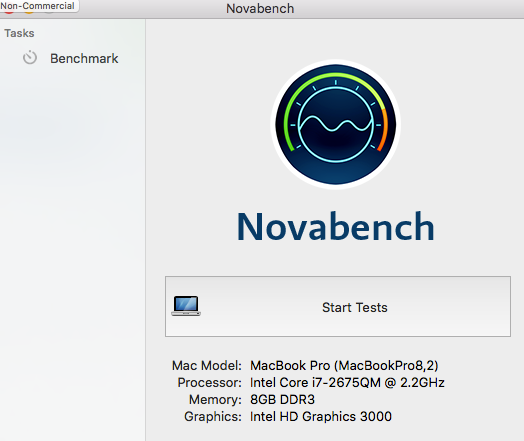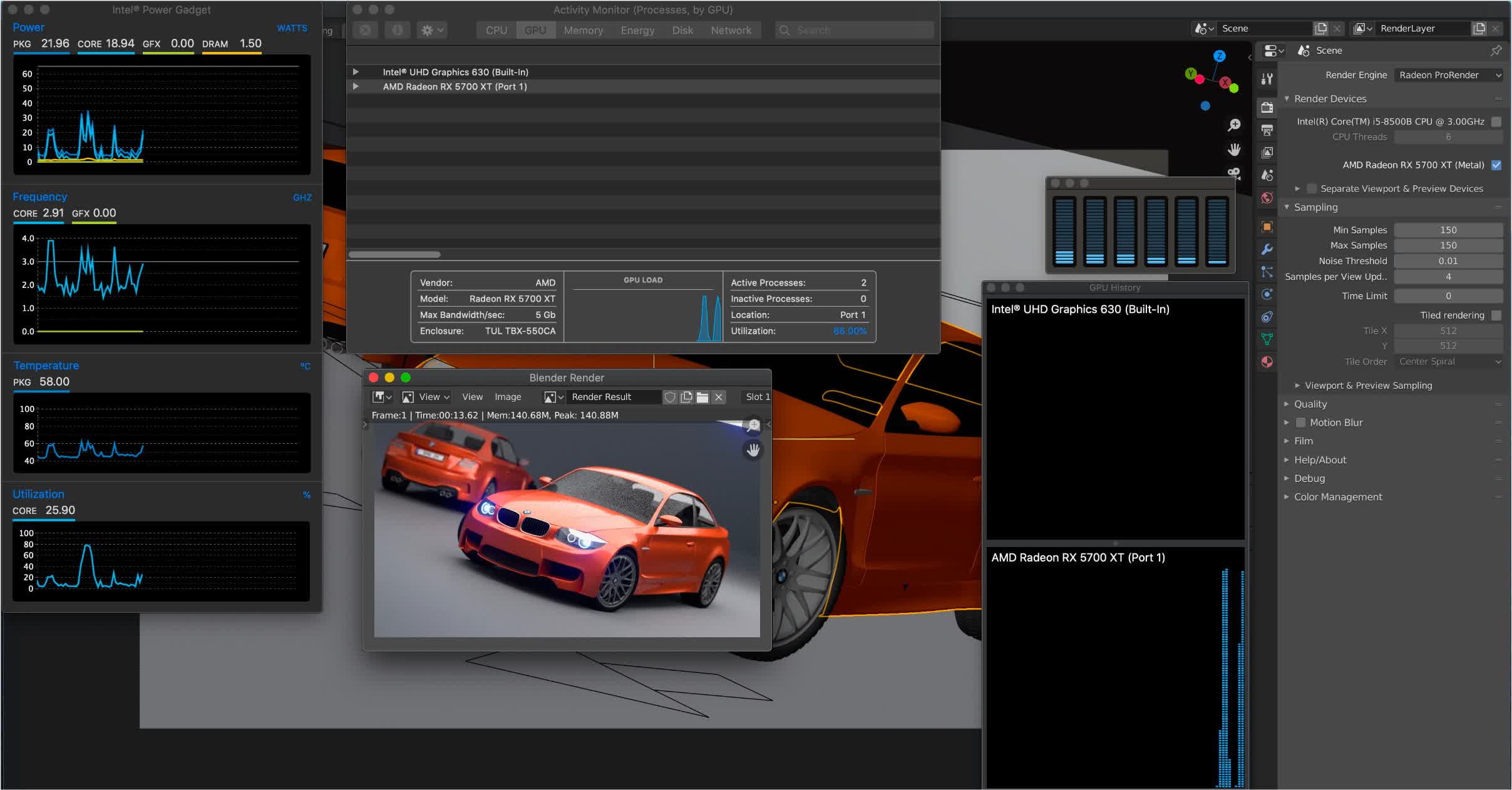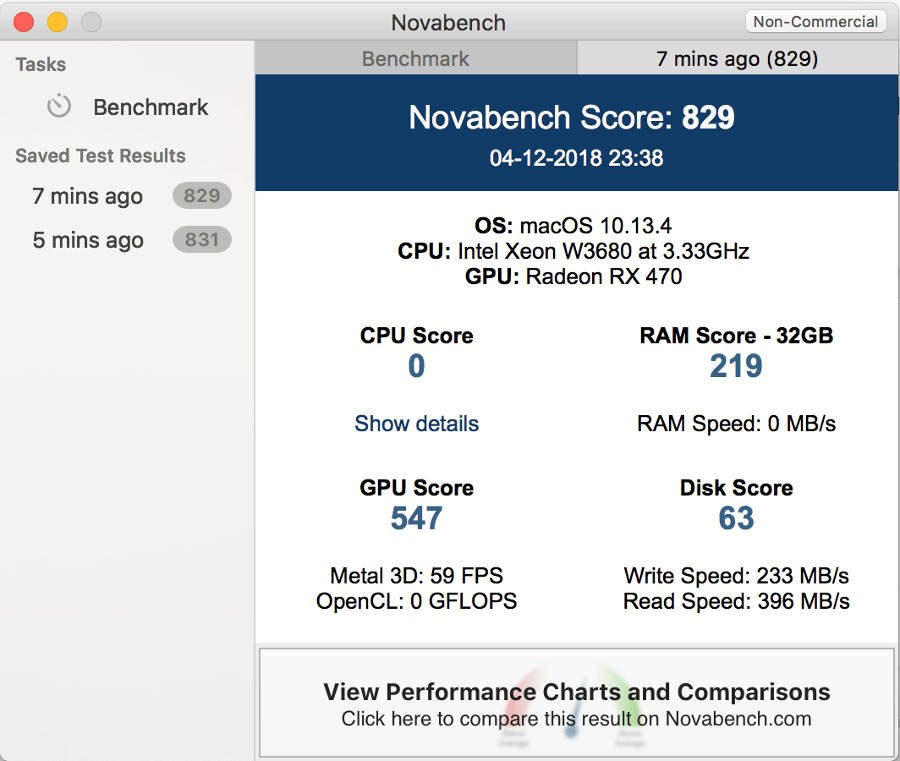

- Video benchmark for mac for mac#
- Video benchmark for mac 720p#
- Video benchmark for mac pro#
- Video benchmark for mac software#
Video benchmark for mac software#
So there you have it – some hard numbers that I challenge anyone to beat with their choice of video editing software and computer system.1. My time without GPU acceleration beat Ozer’s FCPX time by 1m46s although this isn’t a fair test for FCP X because my hex-core video editing computer is newer and faster than the quad core system that Ozer was testing on and I’m unable to test Mac software on a PC. Ozer didn’t test this workflow but I like to remind myself just how much a difference the GPU acceleration is making to my render times.

I then disabled the GPU for the 3 layer opacity test and it took 6m31s. My times were only 1m13s, which is 3.77x faster than Ozer’s results. I then created a 3 layer timeline with moving and opposite opacity settings on my first two color corrected tracks, which sat on top of a color corrected video track. By my count that is more than 3x faster than Ozer’s 3m10s.
Video benchmark for mac 720p#
I recreated Jan’s AVCHD tests and my 60 second 1080 30P timeline took only 58 seconds for a 10 Mbps 720P VBR 2 pass H.264 export of a single track of color corrected footage with GPU enabled.
Video benchmark for mac pro#
I decided to run a few numbers of my own because I know I could get even faster render times with Premiere Pro CS6 on my new 2012 Video Editing Computer Build, which I have an entire blog post dedicated to and has been discussed on the Adobe Forums and featured on the Videoguys Blog. I demonstrated this last year in my Adobe Premiere Pro CS5.5 review in EventDV Magazine. Heck, all of the GeForce cards are faster than the FX4800. The FX6000 is even faster and a Maximus configuration, combining a Tesla C2075 with a Quadro 2000, 4000, or 6000, even faster. When it comes to speed, the newer FX4000 card would have produced even faster results for Premiere and it is also available in Mac and PC versions.

Keep in mind the Quadro FX4800 card that Ozer used in his tests was released in late 2008 and is even older than Jan’s 2009 test system, although that is pretty current for a Mac Pro 😉 Sure FCP X might be able to close the gap a little with a Radeon 5870 card but then Premiere could pull away even further if you paired it with a modern NVIDIA card too. But this type of test is designed to showcase the advantage of one over the other and it is a fair comparison, even if FCP X never had a chance. I have to agree that the set-up wasn’t exactly a fair fight for FCP X because Adobe has a huge advantage when paired with an approved NVIDIA CUDA card.

I had no interest in seeing if Final Cut Pro X is anywhere as fast as Adobe Premiere Pro CS6 is because I already knew the answer: when paired with an NVIDIA CUDA GPU accelerating video card, Premiere Pro is the fastest video editing system. For some reason I can edit a video on Premiere, and after about 20-30 minutes, my computer starts to run reeeeally sluggish, not sure what it could be.
Video benchmark for mac for mac#
Video Production Article Responseġ0 days after Ozer’s Benchmark Tests article was written there were several comments about render times but no one was willing to provide any of their own benchmarks to back-up their comments and opinions. Is there any benchmark tests that can be done for video editing for Mac computers Just wanted to see if the computer I have at work is good for 4k editing, Color Correcting, 2D Work, etc. I did not contribute to his article nor have I spoken with him or anyone at Streaming Media Producer or Adobe with regards to the article in question and am writing this all on my own while I wait for a few GB of video to finish uploading before I can quit for the day. I guess he is probably still upset at Apple for killing Final Cut Pro and replacing it with a consumer application called Final Cut X but he was a bit rude in his comments.įull disclosure: Like Jan Ozer, I am a writer for Streaming Media Producer, and he disclosed in his article that the article in question was specifically sponsored by Adobe. I wasn’t expecting the stream of comments and bashing that ensued though from an individual who is a Final Cut trainer. I wasn’t too surprised by the results and appreciate that Ozer explained his testing parameters so that users would be able to compare his benchmarks to their own. 8 Core 2009 Mac Pro with 2.93 GHz Zeon 5500 processor Video Production Article Discussion


 0 kommentar(er)
0 kommentar(er)
